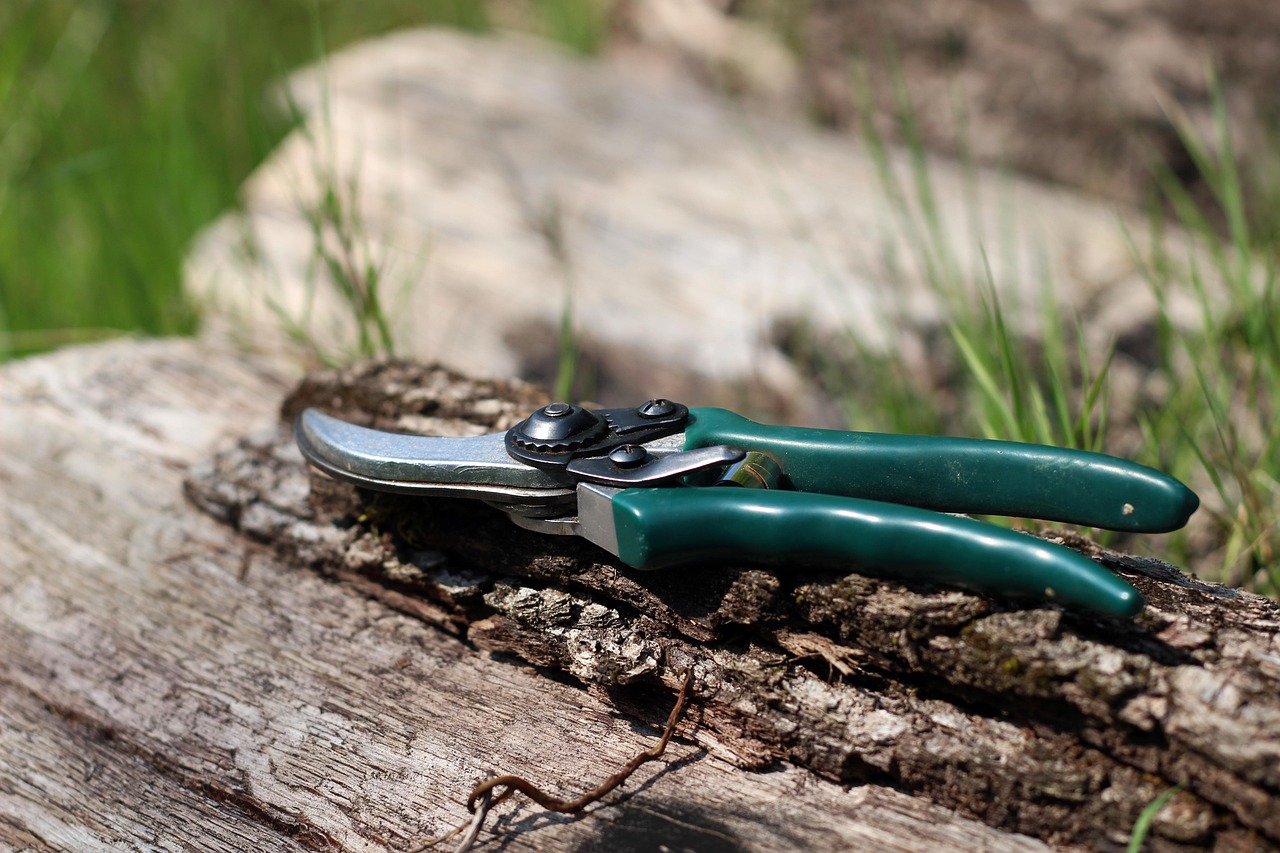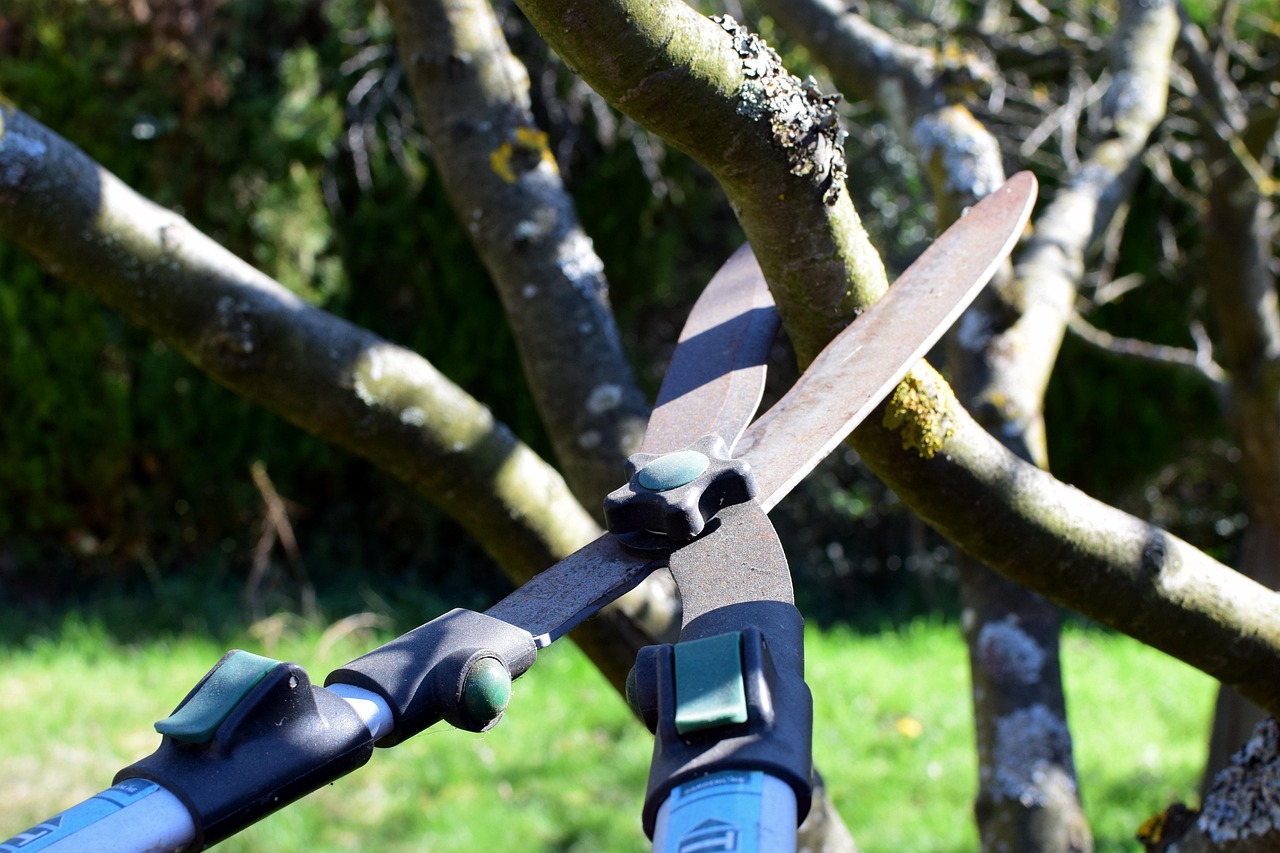Essential pruning techniques for coffee and tea trees include removing dead or diseased branches, shaping the canopy for better sunlight exposure, and thinning out excessive growth to promote airflow. Proper timing and method are crucial to encourage healthy growth and maximize yield.
Pruning is an important aspect of maintaining the health and productivity of coffee and tea trees. These plants require careful attention to thrive and produce high-quality yields. Regular pruning helps in controlling the shape of the tree, enhancing light penetration, and improving air circulation within the canopy. This is essential for preventing diseases and encouraging robust growth.

Coffee and tea trees are commonly grown in tropical and subtropical regions. They both have unique growing conditions and requirements. Coffee trees prefer slightly acidic soil, while tea trees thrive in well-drained, loamy soils. Understanding the specific needs of these plants can lead to better pruning practices that tailor to their growth habits.
Understanding the Growth Habit
Both coffee and tea trees have distinct growth habits that influence pruning techniques. Coffee trees can grow quite tall, reaching heights of up to 10 feet. They typically have a bushy growth pattern, which means that careful pruning is necessary to maintain a manageable size. Conversely, tea trees can also grow tall but are often kept shorter through regular pruning. This helps facilitate harvesting and improves air circulation.
To effectively prune these trees, it is essential to understand their growth cycles. Coffee trees generally have a biennial flowering cycle, meaning they produce flowers every other year. This characteristic affects when and how you should prune them. Tea trees, on the other hand, can be pruned at different times throughout the year depending on the desired harvest schedule.

Essential Pruning Techniques
There are several techniques that growers should consider when pruning coffee and tea trees. Each technique serves a specific purpose and can greatly impact the health of the plant.
1. Thinning
Thinning involves removing some branches to reduce overcrowding in the canopy. This technique promotes better air circulation and sunlight penetration, which are vital for the overall health of the tree. In coffee trees, this can also help in reducing the risk of diseases such as leaf rust.
2. Shaping
Shaping is crucial for creating a balanced structure in the tree. For coffee plants, maintaining a height of about 4 to 6 feet is ideal for easy harvesting. Pruning should focus on the central leader and lateral branches to encourage a more compact shape. For tea trees, shaping promotes a bushy appearance that is more conducive to a higher yield.

3. Deadwood Removal
Removing dead or diseased wood is essential for preventing the spread of disease. Regular inspections should be conducted to identify any problematic areas. Removing these branches allows the tree to direct its energy towards healthy growth instead of wasting resources on damaged areas.
4. Timing of Pruning
The timing of pruning is critical for success. For coffee trees, it is best to prune after the harvest season when the plant is less stressed. This timing allows for new growth to develop before the next flowering cycle. In contrast, tea trees can be pruned multiple times throughout the year but should be done with care not to interfere with active growth periods.
Recommended Tools for Pruning
Using the right tools can make a significant difference in the effectiveness of pruning techniques. Here are some commonly recommended tools:

- Hand Pruners: Ideal for small branches and precise cuts.
- Loppers: Suitable for thicker branches that require more leverage.
- Saws: For larger branches that cannot be pruned with hand tools.
- Protective Gear: Gloves and safety goggles are essential to ensure safety while pruning.
Benefits of Proper Pruning
Implementing these essential pruning techniques has numerous benefits for coffee and tea growers:
- Improved air circulation reduces humidity within the canopy.
- Better sunlight exposure enhances photosynthesis.
- Healthier plants lead to higher yields and better fruit quality.
- Reduced risk of pest infestations and diseases.
By adopting these practices, growers can ensure that their coffee and tea trees remain healthy and productive for many seasons to come.
Advanced Pruning Techniques
In addition to the essential pruning techniques, advanced methods can be utilized to enhance the growth and yield of coffee and tea trees. These techniques require a deeper understanding of plant physiology and growth patterns. Implementing these advanced strategies can lead to remarkable results in tree health and productivity.
Canopy Management
Canopy management is a crucial aspect of advanced pruning. It involves manipulating the tree’s structure to optimize light exposure and air circulation throughout the canopy. This technique is particularly important for coffee trees, which can become dense and bushy.
Key elements of canopy management include:
- Height Control: Keeping coffee trees at an optimal height ensures easy access for harvesting and prevents shading of lower branches.
- Branch Orientation: Pruning branches to grow outward rather than inward allows for better air circulation and sunlight penetration.
- Layering: This technique involves creating layers within the canopy. By selectively pruning some branches, growers can maintain multiple levels of foliage that receive adequate light.
Renewal Pruning
Renewal pruning is a method that involves removing older branches to encourage new growth. This technique is particularly beneficial for older coffee and tea trees that may have reduced productivity. By rejuvenating older plants, growers can greatly enhance their yield.
Steps for effective renewal pruning include:
- Identify branches that are more than three years old or showing signs of decline.
- Cut these branches back to a healthy lateral branch or the trunk to stimulate new growth.
- Monitor new shoots that emerge and prune them appropriately to encourage balanced growth.
Timing and Seasonal Considerations
Understanding the seasonal growth patterns of coffee and tea trees is vital when planning advanced pruning techniques. Each species has unique flowering and fruiting cycles that dictate the best times for pruning.
The following table outlines the general timing for pruning based on the growth cycle of each tree:
| Tree Type | Best Pruning Time | Reason |
|---|---|---|
| Coffee Tree | Post-Harvest (April – June) | Allows recovery before the next flowering cycle. |
| Tea Tree | Between Flushes (May – August) | Avoids disturbance during active growth periods. |
Pest and Disease Management through Pruning
Pest and disease management is another critical aspect of pruning coffee and tea trees. Regularly pruning away unhealthy branches helps control infestations and prevents diseases from spreading.
Identifying Common Pests and Diseases
Some common pests and diseases affecting coffee and tea trees include:
- Coffee Borer Beetle: A major pest affecting coffee trees, it bores into the beans and causes significant damage.
- Leaf Rust: A fungal disease that causes yellow spots on leaves, leading to defoliation.
- Tea Leaf Galls: Caused by pests that induce abnormal growth on leaves, affecting overall plant health.
Pruning as a Preventative Measure
Pruning can serve as a preventative measure against these issues. Here are strategies that growers can employ:
- Regular Inspections: Frequent monitoring of trees for signs of pests or diseases enables early intervention.
- Cleansing Cuts: Always use sterilized tools to make cuts, reducing the risk of introducing pathogens during pruning.
- Removing Infected Material: Promptly remove any infected branches or leaves to minimize the spread of disease.
Nutritional Considerations Post-Pruning
After pruning, it’s essential to provide adequate nutrition to support the regrowth of coffee and tea trees. Proper fertilization can enhance recovery and promote healthy new growth.
The following nutrients are particularly important:
- Nitrogen: Crucial for leaf development and overall plant vigor.
- Phosphorus: Supports root development and flowering.
- Potassium: Aids in water regulation and disease resistance.
A balanced fertilizer should be applied after pruning to ensure that the trees have the necessary nutrients for recovery.
By implementing these advanced pruning techniques, growers can significantly enhance the health and productivity of their coffee and tea trees, paving the way for a successful harvest season.
Seasonal Maintenance and Care
Seasonal maintenance is critical for the long-term health of coffee and tea trees. Each season presents unique challenges and opportunities for growers. Understanding these seasonal changes can significantly influence pruning schedules and overall tree care.
Spring Care
Spring is a vital time for growth and development in coffee and tea trees. As the weather warms, trees begin to awaken from dormancy. Key activities during this season include:
- Assessment of Winter Damage: Inspect trees for any damage incurred during the winter months. Prune away any dead or damaged branches to promote healthy growth.
- Fertilization: Apply fertilizers rich in nitrogen to support leaf growth as the trees begin to leaf out.
- Pest Monitoring: Keep an eye out for pests that may emerge with warmer temperatures. Early identification can prevent larger infestations.
Summer Care
During the summer, coffee and tea trees are in their peak growing phase. This period requires careful management to ensure optimal growth. Consider the following:
- Regular Pruning: Light pruning can be done to remove any unwanted shoots or branches that may shade other parts of the tree.
- Watering: Ensure that the trees receive adequate water, especially during dry spells. Mulching around the base can help retain moisture.
- Canopy Management: Continue managing the canopy to maximize sunlight exposure and airflow as leaves expand.
Fall Care
As temperatures begin to drop in the fall, it’s time to prepare coffee and tea trees for the upcoming winter. Important steps include:
- Final Pruning: Conduct a final pruning session before winter sets in. Focus on removing any weak or diseased branches.
- Soil Testing: Test soil pH and nutrient levels to determine if any amendments are needed before the cold months.
- Mulching: Apply a layer of mulch around the base of the trees to protect roots from freezing temperatures.
Winter Care
Winter can be a challenging time for coffee and tea trees. While these plants are generally hardy, they still require some attention during this season:
- Protection from Frost: If frost is expected, consider using frost cloths or other protective coverings to shield young trees.
- Watering Management: Water trees during dry spells, as roots can still require moisture even in colder weather.
- Planning for the Upcoming Season: Use this time to plan future pruning and care strategies based on observations from the previous growing season.
Tools for Seasonal Maintenance
The right tools make seasonal maintenance easier and more effective. Here are some essential tools for taking care of coffee and tea trees throughout the year:
- Pruning Shears: These are essential for making precise cuts on smaller branches.
- Loppers: Best for cutting thicker branches that require more force.
- Watering Can or Hose: Necessary for ensuring adequate hydration, especially during hot months.
- Soil Testing Kit: Useful for assessing soil health and nutrient levels, allowing for targeted fertilization.
- Mulch Material: Organic materials like wood chips or straw help maintain soil moisture and temperature.
The Role of Environmental Factors
The environment plays a significant role in the health of coffee and tea trees. Factors like temperature, humidity, and soil quality can impact growth and yield.
Temperature Effects
Coffee and tea trees thrive in specific temperature ranges. Generally, coffee prefers temperatures between 60°F and 70°F, while tea thrives in slightly cooler temperatures, ideally between 50°F and 68°F. Extreme temperatures can stress the plants and affect their growth patterns.
Humidity Levels
Humidity is another crucial factor for these crops. Coffee trees prefer moderate humidity levels between 60% and 70%. High humidity can lead to fungal diseases, while low humidity can cause water stress. Monitoring humidity levels can help growers take preventive measures against related issues.
Soil Quality
The quality of the soil directly influences plant health. Ideal soil conditions for coffee and tea trees include:
- Adequate Drainage: Well-drained soils prevent root rot and other moisture-related issues.
- Sufficient Organic Matter: Soils rich in organic matter improve nutrient availability and overall soil health.
- pH Balance: Coffee prefers slightly acidic soil (pH 6-6.5), while tea trees thrive in more neutral to slightly acidic conditions (pH 5.5-6.5).
Caring for coffee and tea trees involves a comprehensive approach that encompasses seasonal maintenance, environmental monitoring, and proper tool usage. By staying vigilant and proactive, growers can ensure their plants remain healthy year-round, ultimately leading to better yields and quality produce.
Common Mistakes to Avoid in Pruning
While pruning is essential for the health of coffee and tea trees, there are common mistakes that growers should actively avoid. Understanding these pitfalls can help ensure that pruning efforts are effective and beneficial.
- Pruning at the Wrong Time: Timing is crucial. Pruning too early in the spring can remove buds that are about to bloom. Conversely, pruning too late may hinder new growth before winter.
- Over-Pruning: Removing too many branches can stress the plant and reduce yield. It’s important to focus on removing dead or diseased wood without overly thinning the canopy.
- Neglecting Tool Maintenance: Using dull or dirty tools can lead to jagged cuts which may harm the plant. Keeping tools clean and sharp is vital for making precise cuts.
- Ignoring Growth Patterns: Each tree species has its own growth patterns. Failing to account for these can result in improper shaping and poor health of the tree.
- Skipping Regular Monitoring: After pruning, it’s crucial to keep an eye on the tree’s recovery and growth. This monitoring helps identify any issues early on.
Integrating Technology in Pruning Practices
The integration of technology into agricultural practices has become increasingly popular. For coffee and tea growers, technology can enhance pruning and overall tree management. Here are some technological advancements that can be utilized:
- Drones: Drones can be used to survey large plantations, providing insights into tree health and identifying areas that may require more attention.
- Soil Sensors: These devices can monitor soil moisture and nutrient levels in real-time, helping growers make informed decisions about irrigation and fertilization.
- Agricultural Apps: Various apps help track growth patterns, weather conditions, and pest activity, allowing for more precise management of coffee and tea trees.
- Remote Monitoring Systems: These systems provide alerts about environmental conditions, enabling growers to respond quickly to potential threats like frost or disease.
Choosing the Right Varieties for Pruning
The choice of coffee and tea tree varieties can also influence pruning techniques. Different varieties have unique growth habits, disease resistance levels, and yield potentials. Here are some popular varieties:
| Type | Variety | Characteristics |
|---|---|---|
| Coffee | Arabica | Smoother flavor, prefers higher altitudes, requires careful pruning for optimal yield. |
| Coffee | Robusta | Bitterer taste, hardier plant, requires less maintenance but benefits from strategic pruning. |
| Tea | Camellia sinensis var. sinensis | Preferred for high-quality green teas, responds well to regular pruning to maintain bushy growth. |
| Tea | Camellia sinensis var. assamica | Used for black tea, grows larger, benefits from canopy management techniques. |
Final Thoughts
Effective pruning of coffee and tea trees is a multifaceted process that requires attention to detail and an understanding of each tree’s unique needs. From mastering basic techniques to implementing advanced practices, growers have the opportunity to greatly enhance their crops’ health and yield.
It is essential to stay informed about seasonal changes, environmental factors, and new technologies that can aid in tree management. By avoiding common mistakes and integrating innovative solutions, growers can ensure that their coffee and tea trees thrive throughout their life cycle.
The journey of cultivating these beloved plants is rewarding but demands diligence and care. With the right approach to pruning, coupled with ongoing education and adaptation to changing conditions, growers can enjoy bountiful harvests of high-quality coffee and tea for years to come.
This comprehensive understanding of essential pruning techniques will empower you as a grower, leading to healthier trees and superior yields. Embrace the art and science of pruning as you cultivate your coffee and tea trees for a successful farming experience.
